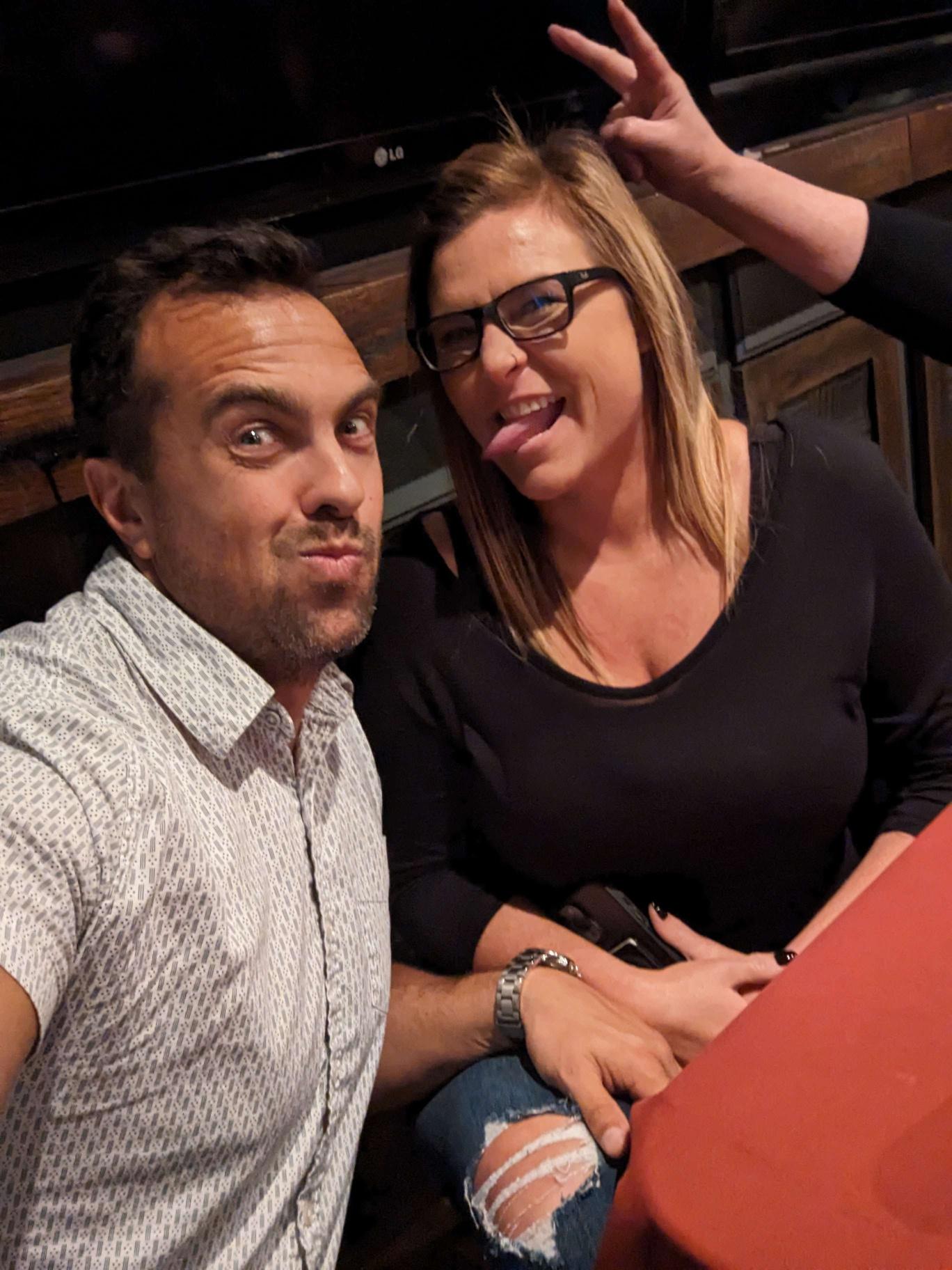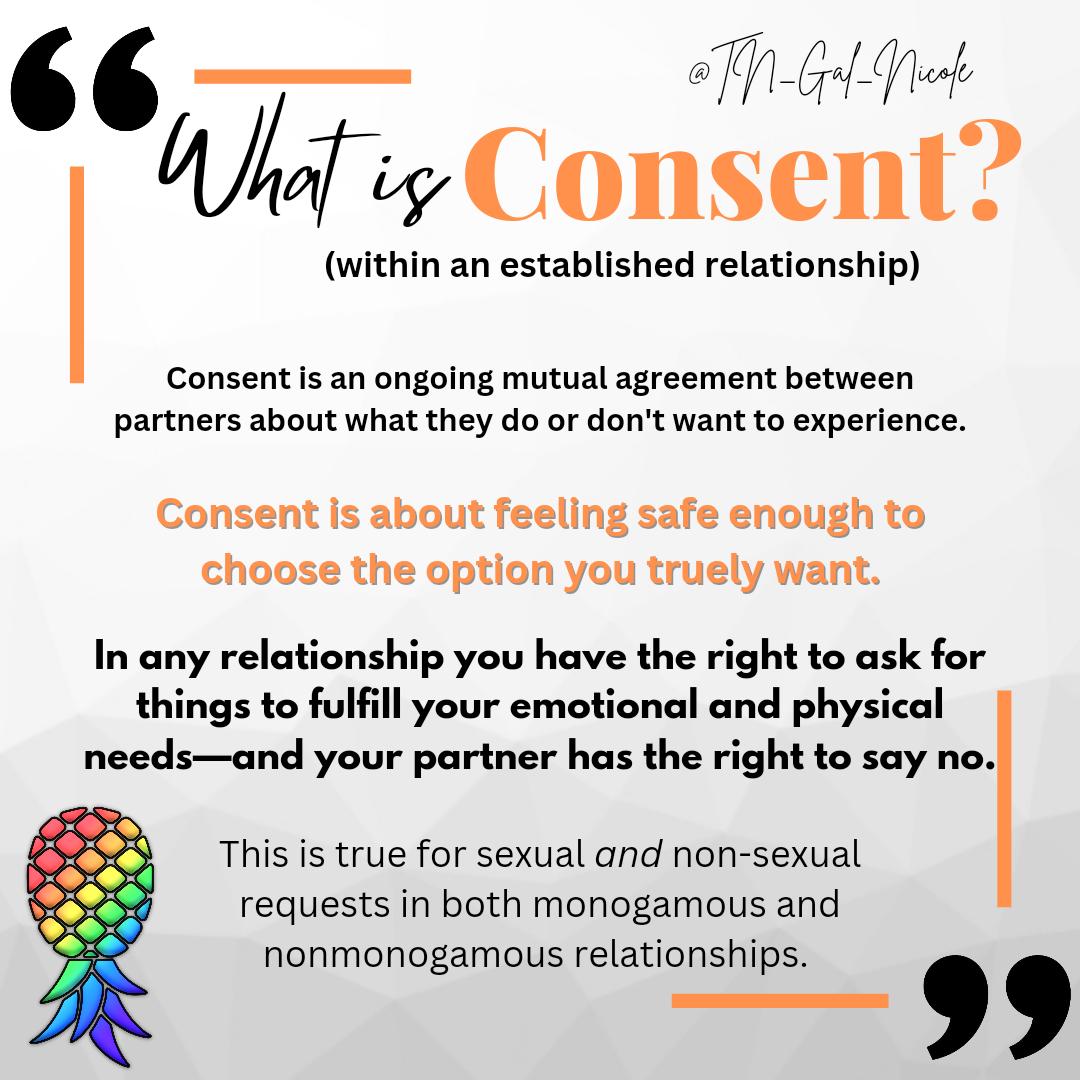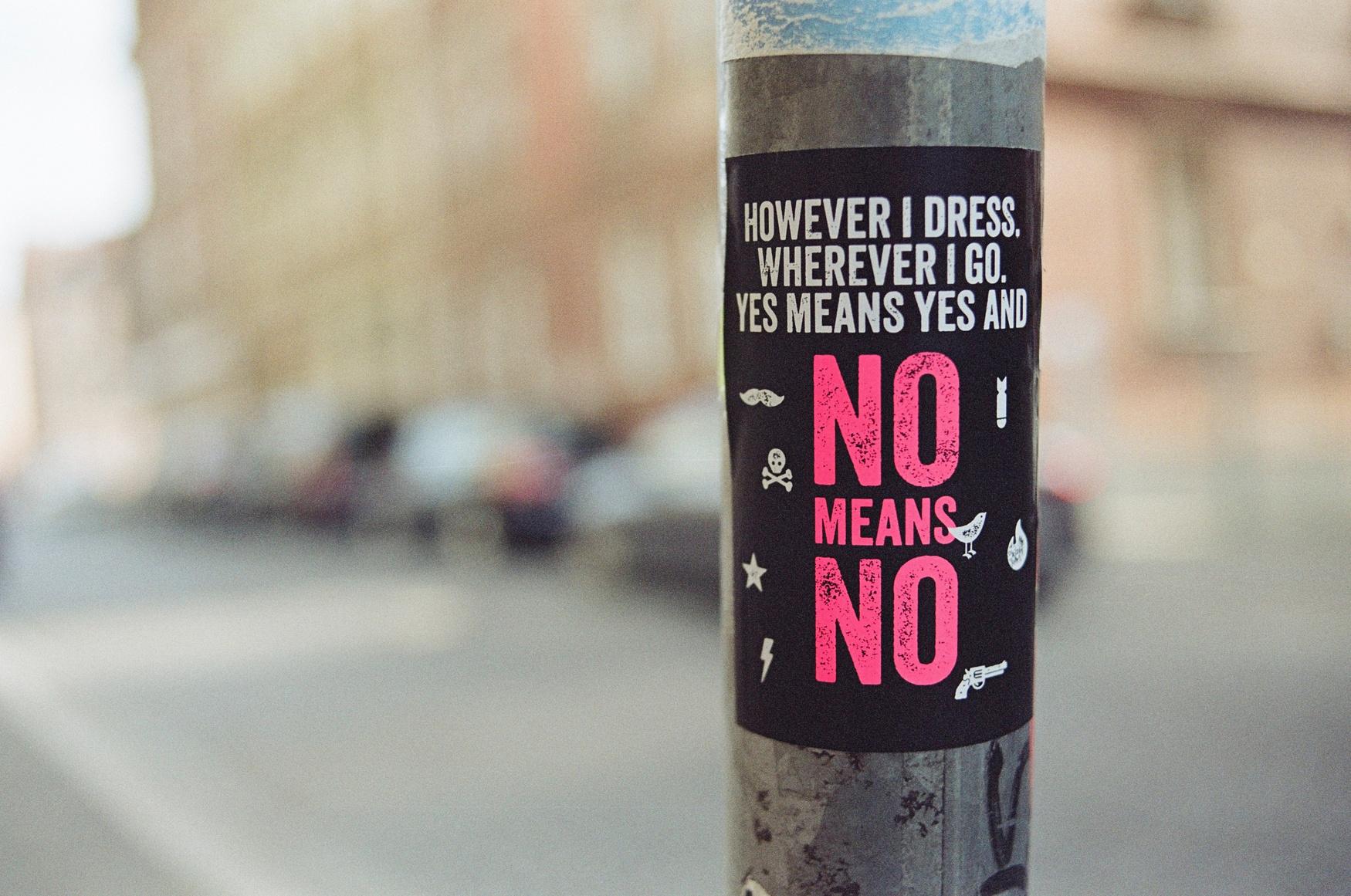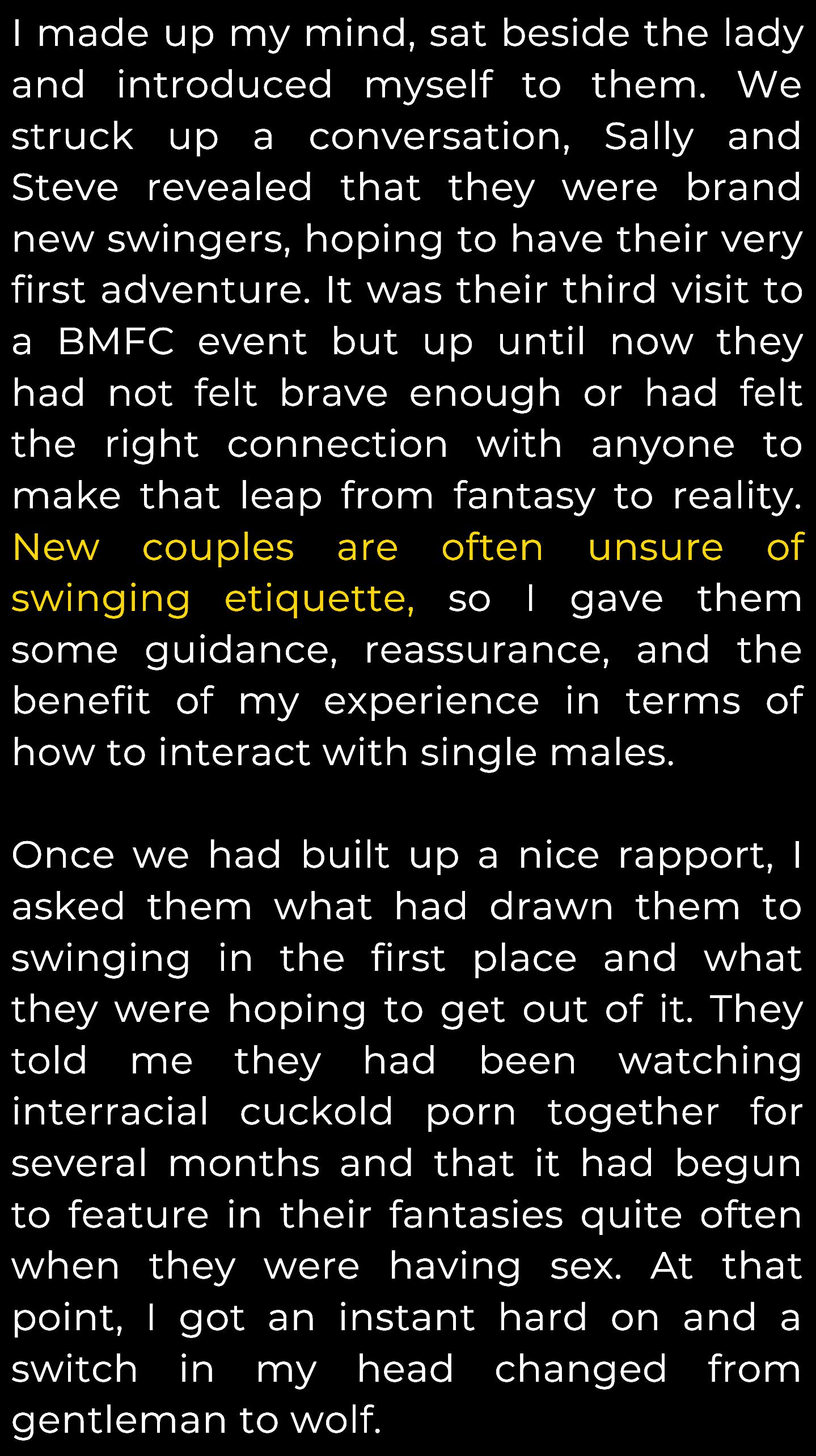





EDITORS


LAYOUT & DESIGN













STAFF SPOTLIGHT OF THE MONTH STAFF SPOTLIGHT OF THE MONTH













































We often relegate “pleasure” to sexual encounters - inadvertently robbing ourselves of simple and delightful pleasures that are ours for the taking.
I encourage you to consider how adding a Daily Pleasure Practice, like the one below, might enhance your commute to work, busy mornings with your children, evening walks with your dog, and, yes, even your hurried showers.
Luxuriating in the world around us enables us to expand our capacity for pleasure and integrate eroticism in all its forms. If consistently practiced, this seemingly small mindshift will revolutionize the way you see yourself, others and the world around you.
HSE works with individuals and partners to restore positive and consensual pproaches to sexuality and relationships She has udied the lasting effects of trauma, childbirth, parenthood, culture, and spirituality on human sexuality and believes that xual health is an inherent, essential, and beneficial mension of being human.


Slowly work through each of your senses using the prompts below.
Wherever you are right now, find one thing of beauty that brings you joy and look at it. Truly look. The key is to focus on something you enjoy - NOT something that disturbs your nervous system. What is it about this thing that is worth admiring?
Feel the world through your fingers. Touch the different textures of your clothes and consciously notice what sensations that produces. What about the ridges of the steering wheel or your bike handles? What happens when your hands grasp a warm tea cup or a glass of ice water? Place a small stone or shell in your pocket for the day and play with it secretly. What do you feel?
If you can, go on a walk and focus on the rustling of the trees, the sound of the birds singing, or a stream or the ocean. If you’re on the subway, can you hear a rhythm that brings you joy? Focus on the different sounds and then let them meld together. What did you notice?

Before you take your next bite of food or sip your next beverage, inhale slowly. What do you smell? Imagine the scent moving into your body. Register the sensation. Wait until you have absorbed your body’s reaction before you eat or drink.
After you have enjoyed the scent of your food or beverage, take a bite or sip and taste it deliberately. Notice where in your body the taste registers and any emotions you might feel Eating can be a deeply sensual and emotional act - give it permission to be.


TN _ Gal _ Nicole joins ALT Life as editorial operations, and is passionate about ENM education








TN _ Gal _ Nicole joins ALT Life as editorial operations, and is passionate about ENM education






like any other social activity, has its own set of etiquette rules that are designed to help participants feel safe, respected, and comfortable during their interactions. While BDSM practices can vary widely and individuals may have different preferences, there are some general guidelines that can be followed to ensure a positive experience for all parties involved.


BDSM, Consent: Consent is an absolute necessity in BDSM. It's important to establish clear boundaries and respect the limits of your partner, and only engage in activities that everyone involved has agreed to. A high-level way to look at consent is to not touch anything that isn’t yours… another human, toys, etc.



Communication: Clear communication is essential in BDSM, both before and during a scene. Discuss boundaries, limits, and expectations beforehand, and be sure to use safe words to communicate during play if something is uncomfortable or needs to stop. However, communication during a scene should be limited to those that are participating in the scene, bystanders should withhold communication until the scene has concluded.
Respect: Respect is key in BDSM. Treat your partner with respect at all times, even during play. Be mindful of their physical and emotional needs, and avoid making judgments or assumptions about their desires or preferences.
Safety: Safety is paramount in BDSM. Always use safe and consensual practices, such as wearing protective gear, practicing safe sex, and avoiding high-risk activities if you're not experienced or prepared.
Privacy: Privacy is important in BDSM, and discretion should be exercised when discussing personal experiences or disclosing the identities of others. Respect the privacy of your partner and the community at large.

Community: BDSM is a community, and it's important to respect the rules and customs of that community. Attend events and workshops, network with other kinksters, and be respectful of those who may have different preferences or experiences than your own.
BDSM dungeons are typically places where people who are interested in BDSM can come together to engage in consensual activities. These activities can range from simple roleplaying to more intense forms of BDSM play.
If you are interested in visiting a BDSM dungeon (NOTE: there’s a whole article published in May on this subject), it is important to understand the rules and expectations of the space. Before entering, you should ask about the dungeon's guidelines for behavior and make sure you understand and agree to them. Generally, BDSM dungeons have strict protocols for consent, communication, and respect for boundaries. Always seek explicit verbal consent before touching someone or engaging in any activity with them.
It is also important to respect the privacy of others in the dungeon. Do not take photos or videos without permission, and do not share any information about what you see or hear in the dungeon with anyone else outside of the space.
Being a spectator at a dungeon holds many expectations, and is almost always focused on how to interact with people that are in the middle of playing – most of the time, the answer is DON’T interact in the middle of play and wait until they have completed play and aftercare. However, it is equally important to know when to walk away without interaction. Some play styles aren’t everyone’s cup of tea and that is perfectly okay! Just don’t yuck someone else’s yum, if it isn’t something you want to see –respectfully walk away without comment.
Finally, remember that everyone in the dungeon is there to explore their sexuality and kinks in a safe and consensual way. Be open-minded, respectful, and non-judgmental of others and their desires.
A munch is when kinksters come together in a nonplay, non-sexual setting to socialize, discuss BDSMrelated topics, share experiences, and build a community. The term "munch" is derived from "burger munch," which was originally coined in the 1980s in the BDSM community to refer to a casual meeting over food.
BDSM munches are typically held in public spaces such as restaurants, cafes, or community centers, providing a safe and inclusive environment for individuals to meet others who share similar interests. These gatherings are open to people of all genders, orientations, and experience levels, including newcomers who are curious about exploring BDSM. Munches often have specific guidelines or rules to ensure everyone feels comfortable, such as a dress code and a focus on maintaining a respectful and non-threatening atmosphere.
Munches provide an opportunity for individuals to network, make friends, learn from others' experiences, and find potential play partners or mentors. They often include discussions, presentations, or demonstrations on various BDSM topics, such as negotiation, consent, safety, and different types of play. It's important to note that while BDSM munches are social events centered around BDSM, they typically do not involve explicit scenes or sexual activities.
Respect privacy: Discretion is crucial when attending a BDSM munch. Do not share personal information or discussions from the munch without explicit consent. Respect people's boundaries and privacy.
Consent and negotiation: Consent is paramount in the BDSM community. Always obtain explicit consent before engaging in any physical contact or discussion of personal interests. Negotiate boundaries, limits, and expectations with potential partners before engaging in any play.

Dress code: Each munch may have a dress code or theme, so be sure to check the guidelines beforehand. Generally, casual attire is acceptable, but some munches may have specific requirements such as fetish wear or specific dress codes.
Respect others' dynamics: BDSM munches are attended by people with various dynamics and relationship structures. Be respectful of everyone's choices and avoid making assumptions or judgments based on appearances.

y zone: A munch is a social gathering, not a play party.
al play or scenes are typically not allowed at the munch ave your play for a private setting or attend specific rties or events.
n-minded and non-judgmental: The BDSM community se, and people engage in a wide range of kinks and

s. Maintain an open-minded attitude and be accepting rs' interests, even if they differ from your own.

ze and network: Munches are primarily social events, so e opportunity to meet and connect with others who similar interests. Engage in conversations, ask ns, and be respectful of others' boundaries.
l and substance use: Some munches may have rules ng alcohol or substance use. Follow any guidelines set organizers and ensure you consume responsibly if ted.
permission: If you wish to take photographs or videos
munch, always ask for permission from the individuals
d. Many people value their privacy and may not want hotographed.
the rules: Each munch may have its own specific rules elines. Familiarize yourself with these rules and adhere to them to maintain a safe and respectful environment.
Remember, these guidelines are not exhaustive, and it's always a good idea to familiarize yourself with the specific etiquette and rules of the munch you plan to attend. Additionally, if you have any questions or concerns, don't hesitate to reach out to the organizers or experienced community members for guidance.
Remember, BDSM is a consensual activity that requires respect, communication, and safety. Following these guidelines will help ensure a positive and fulfilling experience for all involved.

For just a moment, I want to talk about whorephobia in the Swinger lifestyle. Many swingers are also sex workers engaging in camming professions or OnlyFans. Most of them do not consider themselves sex workers because of the Whorephobic connotation of the word. Sex workers are adults who receive money or goods in exchange for consensual sexual services or erotic performances, either regularly or occasionally.


Camming and OnlyFans are considered erotic performances just as stripping, professional domming, and full-service sex work are. I also have seen other swingers engaging in whorephobia within the community for women who prefer gang bangs, hot wives, and even other women who are in full-swap couples. I've seen women shame other women because of the amount of (or lack of) clothes they are wearing to swinger events. If swingers clubs or sex clubs are supposed to be safe spaces for sexpositive individuals, then how can we feel safe if other women are shaming us for our fantasies and what we are wearing?



Sometimes with whorephobia, we don't even realize what we are doing because of our culture, our upbringing, or even our own personal morals. It's important to check ourselves when we feel these thoughts coming on and remember that, like those who engage in sex work, each swinger or couple has their own boundaries when it comes to the swinger lifestyle, and as long as they respect our boundaries and consent the choice is ours and ours alone (with our partner or partners of course) on how we engage with others in a sex-positive space.
It is my belief that sex workers are experts at sexual consent, or at least they should be. The sex work community has so much experience in negotiating boundaries. So, for example, for non-sex workers, I think one of the most important lessons in consent culture is taking back your power. It's ok to negotiate your boundaries with others in a sexual situation.
When a sex worker is in a place of power, it's much easier for them to negotiate their boundaries with others. If a sex worker has less power, then they have less control over the situation, which means less consent. Sex workers know the difference and know that we can choose to have sex that is not just about pleasure–and still get our needs met and meet others' needs No sex worker asks
it's an agreement between people to xual, and/or labor exchange. It can be voiced eagerly or matter of factly. Silence is never consent. The exchange may be wanted or unwanted, for money or for free but consent must be given without coercion or pressure.


When I started stripping, I was firm on addressing my boundaries during lap dances. It started off with the tapping method; if I felt uncomfortable, I would tap the person twice to let them know they were breaking a boundary. Then it turned into me telling them "no holes" and giggling sweetly. I have slapped hands away if they inched near my thong, sternly saying, "Stop! You can't do that." I ended dances if they pulled my hair or slapped my ass.
At the beginning of my career as a dancer, I didn't really understand boundaries until I started having them. Once I started using my own boundaries, it felt empowering to dictate the terms of someone else's proximity to my comfort zones. The position to set and assert boundaries with customers as a sex worker is determined by our emotional wellbeing as well as life experiences. Some people also believe it is determined by income.
The club opens its doors to good and bad customers alike, and there isn't a manual on how to disentangle the safe from the dangers. It's understanding your own emotional boundaries and physical boundaries, which will be different for every single sex worker.

Prostitution is one of the oldest professions. Stripping, camming, sugar dating, and online content creation like OnlyFans would not exist if it wasn't for hundreds, maybe even thousands of years of people engaging in full-service work. It's not ok to shame full-service sex workers or any of your fellow sex workers based on their boundaries within the sex workspace. Let us not reduce ourselves to whorephobia… let us rise above whorephobia.

When you engage in whorephobia and hatred towards anyone, it's a result of unresolved fears that need attention. If you hate sex workers or engage in whorephobia, redirect that energy toward resolving your internal conflicts instead of directing violence toward us.




Your whorephobia perpetuates violence against women, which is considered normal in the context of cultural stigma.
Prostitution is stigmatized, and we need to acknowledge that we come in contact with someone who has participated in some way in the sex industry. Acknowledge the presence of people in the sex industry and treat them with dignity and respect. Prostitution exists in an economic, political, and social context where poverty and capitalism create limited resources for many communities. It's important to discontinue your engagement in whorephobia and become an ally to all those within the sex workspace.


1. Not communicating - Communication is one of the most important keys to success in the lifestyle. Clear communication between all parties is essential- not only between partners but between all parties involved in play. If there is a lack of communication, boundaries are at risk of being crossed. Individuals/couples who are honest and willing to have open communication will make sure that everyone is on the same page and comfortable, but those who are not may not check in on these things. If you find yourself/yourselves feeling in the dark and not receiving the responses you need, it may be a sign to cut ties.


2. Forceful behavior - Especially when things are new and you are just starting out talking, healthy communication is essential for helping develop the connection. If there is someone/a couple who are not as transparent about wants or needs, don’t seem to care to listen to yours, or are pushy in a way that makes you feel uncomfortable, this may be a sign that they may not be a good match for you. No one should feel pressured to meet, play, or do anything they aren’t ready to do. Sometimes people are excited and prepared to move as quickly as possible, but this behavior can be a red flag if they are not willing to listen to your needs or expect you to keep up with their pace.


3. Crossing boundaries - Clearly communicating rules and boundaries early on helps to make sure that all parties involved are aware of boundaries. Sometimes when talking or playing, it can be easy to get “caught up in the moment”. but unfortunately, it is during this that boundaries can be inadvertently crossed. This doesn’t always happen intentionally, but if it does and comfort levels are clearly disrespected, this is a major red flag. Some examples of this could be insisting on meeting in a location you are not comfortable with, pushing for one-on-one messaging between partners instead of the group chat that you may have stated you prefer, or they try to press that there is no need for condoms (especially after you have already established that their use is nonnegotiable). Remember, for everyone to enjoy their time together, all parties need to feel comfortable and safe. No one should be outside of their comfort zone just to appease others.
4. Lack of Inclusion - Before meeting with others to play, it is important that you feel a good connection with any potential play partners (single or couples). If you feel that potential play partners either don’t seem interested in you (or your significant other, if applicable), it is important for you to address any concerns you may have. If your interactions with others leave you (or your partner) feeling excluded or like they aren’t a part of the conversation, please address this sooner than later. If it seems to continue even after attempting to communicate the issue with the others, it may be a sign that they are not a good match for you. No one should “take one for the team” in any situation.
Sources:
The Swing Nation Podcast, ep. 4
4OURPLAY (4ourplayblog.com)

SwingersHelp
(https://swingershelp com/swinging -couples-to-avoid/)
https://www gstherapycenter com/b log/what-is-the-one-penis-policy
It is important for you to address any concerns you may have.
Living a alternative lifestyle for us means being able to be your truest self. To be able to express yourself in all ways possible. To be able to to truly be comfortable in your own skin. To be able to fulfill all possible fantasy that your mind has ever thought of and being able to do it with your best friend/partner.
WHAT'SYOURGUILTYPLEASURE?
WHATISYOURFAVORITEFOOD?

MAC& CHEESE MAC& CHEESE
HOWLONGHAVEYOUBEENLIVINGANALTLIFE?
WHATATTRACTEDYOUTOIT?

Almost three years. What attracted me to it was being able to live out suppressed sexual urges for women that my entire life I was thought was wrong and being comfortable enough to do so with my husband.


HOWWOULDDOYOUDEFINEYOURALTLIFE?
FREEING FREEING FREEING
And comfortable with amazing communication we can truly look at each other and know exactly how each other is feeling with just one look.

WHATDOESPRIDEMONTHMEANTOYOU?
is this is the one month we’re we as a bisexual is this is the one month we’re we as a bisexual a couple can stand a little taller and express couple can stand a little taller and express couple a ourselves a little louder than usually. We fly our ourselves a little louder than usually. We fly our We pride flags all day long because we are truly all day long because we truly because proud of what our community has proud of what our community has community has accomplished where we as a bi couple can accomplished where we as a couple can can feel free to hold our heads high and scream it feel free to hold our heads high and it to from the roof tops that we are bisexual and we from the roof we are bisexual and we the bisexual are proud and that no one is going to stop us! and that no one is going to stop us! no going to
WHATISONELESSONEYOUHAVELEARNEDON YOURALTLIFEJOURNEY?
ECTEDYOUR WAYDUETO MINATION?
Ye g custody case fo being in an alt lifestyle and the lack of education that others who are not in it.
WHATISONETHINGON
HEDO HEDO HEDO
Never say you don’t like something till you try it atleast twice . One experience could be completely different from another.
WHATISYOUR BIGGESTTURNO
CONFIDENC CONFIDENC CONFIDENC & WELCOMING & WELCOMING WELCOMING ATTITUDE ATTITUDE ATTITUDE

HOWDIDYOURALTLIFEJOURNEYBEGIN?
Our journey began from my husband catching me checking out women anytime we were out. He told me I should get a girlfriend and I told him that I didn’t want to do it alone, so we began our journey through the alt lifestyle together!




1. Lack of respect for boundaries: Pay attention to how the person responds to discussions about boundaries and limits. A fake and toxic Dominant may dismiss or belittle your boundaries, push you to exceed your comfort zone without consent, or show a disregard for your limits.
2. Constant need for control:
Watch for signs of excessive control or demands during conversations. A fake Dominant may try to exert control over you even before a relationship is established. They may exhibit a need for dominance without consideration for your consent or desire.
3. Lack of communication and consent:
Genuine Dominants prioritize clear and open communication, negotiation, and obtaining enthusiastic consent. If the person avoids discussions about consent, limits, negotiation or if they dismiss the importance of ongoing communication, it could be a warning sign.



4. Grandiose claims without substance:
Be cautious of Dominants who make grandiose claims about their experience, skills, or knowledge without providing tangible evidence. Fake Dominants often try to impress or manipulate others by exaggerating their abilities or achievements.

5. Pressure or rush into a dynamic: Be cautious if the person pushes you to engage in a Domina submissive dynamic too quickly or without proper discussion and negotiation. Genuine Dominants understand the importance of taking time to build trust and establish consent.



6. Inconsistent behavior or contradictory statements: Pay attention to any inconsistencies in their words or actions. Fake Dominants may exhibit inconsistent behavior, making promises they don't keep or making contradictory statements that create confusion or manipulation.
7. Isolation from support networks: A toxic Dominant may attempt to isolate you from your friends, family, or the broader BDSM community. They may discourage or prohibit you from seeking guidance or support outside of the relationship, making it harder for you to recognize the unhealthy nature of the dynamic.

8. Manipulation and control: A toxic Dominant may use manipulation tactics to exert control over you This can include gaslighting guilt-tripping isolating

-
BY LEA ROSEL – Lesbian
G – Gay

B – Bisexual
T – Transgender

Q – Queer


I – Intersex


A – Asexual/ACE
+ – Anyone Not Listed
ex: Non-binary, pansexual, demisexual, genderfluid
Traditional 6-Stripe Flag
Red – Life
Orange – Healing
Yellow – Sunlight
Green – Nature
Blue – Serenity
Violet – Spirit of the
LGBTQIA+ People
Transgender Flag
Blue – Traditional Boy Color
Pink – Traditional Pink Color
White –
Intersex/Transitioning/Undef ined Gender
Bisexual Flag

Pink – Attraction to Same Gender
Blue – Attraction to Opposite Gender
Purple – Attraction to Two Genders (the mixing of the Pink and Blue color stripes)
Pansexual Flag


Pink – Attraction to Women
Blue – Attraction to Men
Yellow – Non-Binary
Non-Binary Flag

Yellow – Gender Outside of The Binary
White – Multiple/All Genders
Purple – Those Between Male/Female Binary Black – No Gender
Progress Pride Flag

(current, most common flag) Red, Orange, Yellow, Green, Blue, Violet – Same as Traditional 6 Stripe


White, Pink and Light Blue –
Transgender Flag

Incorporation
Brown – Persons of Color
Black – Represents The Thousands Lost During the HIV/AIDS Crisis on the 1980s and 1990s






Swingers are often stereotyped with a lack of concern for their safety and sexual health. On the contrary, studies are finding people in consensual nonmonogamous relationships have a lower risk of contracting an STI than the average American.


The swinging lifestyle is a community, staying healthy and safe is a big concern for swinger newbies and veterans alike. After all you can catch a cold simply by shaking hands with someone so we all understand that sex is never 100% safe. Thankfully, there are a number of things you can do to greatly lower your swinging risks while still enjoying a spicy encounter.
The best way to minimize risk is to just avoid risk. Many swingers opt to only engage in soft swap swinging. Staying away from penetrative play puts you at a much smaller risk for STIs and accidental pregnancy. Even if you prefer full swap playing, you should always talk with your partner or partners about boundaries and limits. There are many ways to pick and choose your play guidelines that lessen the risk of your health and safety and communication is key.
Over the last few years there have been a multitude of advances in better feeling condoms. It goes without saying that the use of condoms greatly reduces risk while engaging in penetrative sex. Playing safe is not only sexy, it shows that you're responsible with your sexual health. Condoms are an inexpensive, quick way to protect yourself and your partner/s from not only pregnancy but a whole gambit of STIs.

No matter how you choose to control the risks involved with your sexual experiences, you should include regular STD testing. Even if you have no symptoms, regular testing can help you get treatment before any symptoms get out of hand or even show up. Regular testing helps protect more than just you and your partners. It protects your reputation as a trusted sex partner.

The best defense against STIs is honesty and trust. You should be honest with your play partners and expect the same from them. Honesty is expected within the swinger community for this reason. If you ever suspect a partner is not being 100% honest, you should decline to play. Trust your gut and do not take chances
Another precaution that does not get enough attention is personal safety.
When meeting new people or couples, especially if you meet them online, stay cautious. Take your time and have fun getting to know them before you actually engage in swinging activities.
First time meet ups are always best in a public place like a local coffee shop. There you can talk about what you and your partner, if applicable, want to get out of the experience.
Developing a personal relationship with potential play partners builds trust and mutual respect. It's much safer to have a select few couples/people who you can trust than frequently swapping with strangers.
While the swingers lifestyle does come with its health and safety risks, being responsible and taking precautions will help you stay safe while embracing the lifestyle at your own pace.
Just remember to use common sense and think with your actual head. It can be too easy to get caught up in the heat of the moment and expose yourself to a risk. If something doesn’t feel right, it’s a no. Period. There will always be other opportunities in the future – but that's only if you keep yourself safe and healthy!


The #MeToo movement did a lot of good for bringing attention to the huge problem of sexual assault in this country. Unfortunately, the idea that penis owners somehow have a right to vagina owners bodies is still a thing. You would think in a developed country like the US, it wouldn’t be an issue anymore, but here we are.



Sexual harassment is a cousin/sister/brother to sexual assault, but it can be a lot more subtle. It’s also a LOT more common.
The Equal Employment Opportunity Commission defines sexual harassment as; “Unwelcome sexual advances, requests for sexual favors, and other verbal or physical conduct of a sexual nature constitutes sexual harassment when submission to or rejection of this conduct explicitly or implicitly affects an individual’s employment, unreasonably interferes with an individual’s work performance or creates an intimidating, hostile or offensive work environment.” Sexual harassment is illegal, but we still seem to put up with it way too often.

Sexual harassment is most commonly against vagina owners by penis owners. There are all sorts of stories out there about sexual harassment against women. For instance, one woman was tortured by her male colleagues while she pumped in a restroom, having to endure comments about how much larger her breasts were now. Another story is of a lesbian who was fired by her male boss under suspicious circumstances after refusing to give him a blow job. These are SUPER obvious cases.


However, it can be much less obvious in some situations. How about one of my patients whose male boss kept yelling at her for being a pussy while she’s on her period? Or my patient, who is constantly hit on by men at her work as a server at a breakfast joint? Or that one time in medical school when a male dermatologist told me my boyfriend was lying to me about his penis size when I placed my sutures too close together? These are all sexual harassment, and we shouldn’t be tolerating them! There are definitely cases against penis owners too, which shouldn’t be discounted. They’re even less likely to get documented and handled than against vagina owners.


Addressed in Therapy:
Boundary setting and communication
Consent and hierarchy in relationships
Coping with envy or jealousy
Integrating and transitioning relationships
Creating and adjusting relationship agreements
Time management and scheduling
Transitioning to CNM from monogamy
Navigating parenting responsibilities with multiple partners
Disclosure about being nonmonogamous
Disapproval from family and friends
Coping with stigma and judgment
Lack of legal protection for CNM
Discrimination (e.g., employment, housing, custody)
Safer sex considerations
Relating to a partner’s other lovers
Finding resources and support
MOREINFORMATION

For more information, consult resources of the American Psychological Association Division, 44 Consensual Non-monogamy Task Force: https://www.div44cnm.org/resources
Consensual Non-monogamy (CNM) is defined as a relationship arrangement in which each participant gives informed consent to simultaneous, multiple intimate, romantic, and/or sexual relationships.

These arrangements can include polyamory, open relationships, swinging, and relationship anarchy. Some people may desire and/or identify with CNM, but not engage in it.
Those exploring or practicing CNM are often stereotyped and face stigma by healthcare providers (Schechinger, Sakaluk, & Moors, 2018; Vaughan et al., 2019). One in seven people who engage in consensual non-monogamy report discrimination from a mental healthcare provider (Witherspoon, 2018).
The American Psychological Association has approved professional practice guidelines in areas such as multicultural practice (APA, 2017) and working with lesbian, gay, bisexual, and transgender clients (APA, 2012; 2015). Research is being conducted to expand this work for individuals engaged in consensual nonmonogamy.

Recommendations for supporting CNM therapy clients:
Education: Look up information about CNM rather than using time in session.
Avoid assuming monogamy: Being married or partnered does not equate to monogamy.
Acknowledge stigma: This may be causing/amplifying distress.
Avoid blaming CNM: Stress from societal stigma may be causing the problem.
Use inclusive language: Ask about preferred language (i.e., partner(s), spouse, etc.).
Clarify agreements and terms: Ask, don’t assume; all relationships are unique.
Signal CNM affirmation: With statements and CNM symbols.

Ask about relationship style: On forms and intake to avoid mislabelling.
Judgment and bias: Avoid judgment, recommending a traditional relationship, or pressuring clients to disclose CNM status or end a relationship on the basis of it being CNM.
Institution/systems-related recommendations:
Inclusive forms and website: Offer the option to self-identify relationship style on intake and any demographic forms. Be explicitly affirming toward CNM on office documents, non-discrimination statement, and website.
Affirming setting and structure: Provide ample space and chairs for multiple partners.
Longer appointments may also be needed.
Offer CNM support group(s): Topics can include exploring, acknowledging, navigating, and/or coming out about consensual non-monogamy.

Training and Education: Provide annual training for staff about consensual nonmonogamy.
Recruitment: Actively recruit staff who are CNM-affirming or CNM-identified.
Offer educational programs: Example topics can include exploring CNM, coming out as CNM, opening a relationship, coping with CNM stigma, raising children as a parent who is CNM.
Be aware of cultural differences and strive to recognize how consensual non-monogamy intersects with your clients’ other demographics/identities, including sexual identity and expression (including kink), gender identity and expression, race, ethnicity, nationality, socioeconomic status, religion/spirituality, ability/disability status, and age.



I want to start with a disclaimer that this is not how every swinger, open, or polyamorous relationship starts, but the following is my personal experience with these different lifestyles.
Since 9th grade, I always knew my best gal friends meant more to me than they meant to others. I just chalked it up to having a big heart. We had sleepovers, like most girls do at young ages, and cuddled while watching movies. Throughout the years, my boyfriends would continuously get jealous about the time I spent with my best friends, saying, "You shouldn't spend as much time with them as you do with me." But that's all I have known my whole life.
I felt you could love more than one person in different ways and that there were different "degrees" of love. Until my early twenties, when I began my journey to selfdiscovery, I thought I was wrong for feeling this way. I finally found the verbiage to explain this.


The Self-Discovery Journey



Monogamous relationship after monogamous relationship, they ended the same way every time. I'm too friendly with others, and I'm a "flirt", I have too many friends for the liking of my significant others, etc. I felt tired of masking whom I was and toning myself down at the expense of my mental health. I had spent all of my emotional energy being a social chameleon, changing to the expectations of others, and I never honored my expectations or my reality.
It took four years after this realization; I found the man who checked all my boxes. We began to explore life together. We talked about who and what we aspired to be, what we liked sexually, and what our future looked like together. You could say we were a bit infatuated with one another! Everything seemed perfect.
Inevitably, jealousy reared its head with individuals the other was attracted to, looking at, or interested in. We both had high sex drives but worked from dawn to dusk every day. Working full-time took such a toll on our sex life, communication, and relationship. We started to explore porn together and loved bonding over that experience. Slowly, our relationship became more intimate again. We briefly discussed bringing others into the bedroom, but neither of us knew how to go about it. We didn't move forward with the notion at the time.
What's a family without communication? After trying for two years, we successfully birthed two children in three years! We felt happy, whole, overwhelmed, and yet something still felt missing. Growing up, our grandparents lived near our parents. Our parents had a village to help raise their children. We had so much less than a village. In fact, it was just the two of us. I stayed home with the kids, and he worked to support us all.
To say we didn't have the chance to communicate could be slightly fabricated. We didn't realize how much time we weren't making for one another until our youngest turned 2. We didn't know much about one another anymore, like our passions, preferences, or personalities. Our lives have revolved solely around our children, whom we had been working so hard to make sure they had the best childhood possible. We forgot about us.
A common misconception as parents is that if we take care of the kids first, we'll be fine. We learned the hard way, and we were not fine. Suddenly our conversations were blurred by misunderstanding. Who had we become? After we both sought professional help from therapists, we learned more about ourselves as individuals and began to heal from things we didn't know had traumatized us from the beginning.
Slowly we learned more ways to communicate effectively with one another. The biggest part of our therapy was learning that we didn't have to know; we weren't expected to have an answer for every problem. But trying to understand why and wholeheartedly listening to each other was key. *therapy isn't for everyone, but it has helped us tremendously*
In learning to communicate effectively and constantly practicing, we became stronger than ever. We learned to speak our truths. The idea of adding other people to our "extracurricular activities" in the bedroom came up again! I felt sheepish at first as I shared fantasies and my various attractions with him. However, after learning his fantasies and feeling heard when he listened to mine, I felt truly liberated. This was the breakthrough for us. After being together for a decade, we were finally able to open up without fear of retaliation because we knew we could trust one another.
Before finding the Swinger Society podcast, we researched open relationships and what went into them for months. I had previously listened to an open relationship podcast run by women, but was intrigued to hear something from both parties in a married couple. From the beginning, I had never imagined myself being intimate with someone I hadn't had an emotional connection to. This is where our polyamorous relationship discussion began.

I joined polyamorous Facebook groups, did my research, and started to think this was what I wanted. My husband did not want to open up so deeply to another individual, so he wouldn't be participating in relationships other than FWB. We discussed our boundaries and agreed they could be revisited in the future when we felt a shift change in our needs. Starting boundary conversations can be scary at first, but when you know at the end of the day it's you and your partner who are going to be there, and you know you'll be focusing your energy on maintaining that foundation, it feels much easier to do.

Fast forward seven months, and we now have poly "friends" (my husband prefers no label) who help us be our true selves. Upon meeting these individuals, we discussed nothing but boundaries, communication, and the importance of meeting our spouses' needs while expressing ours. We knew we found our people.
After twenty-five years of monogamous relationships being all we saw and knew, I can honestly say that opening up our relationship and now being in a poly relationship with the most kind and understanding individuals we've ever met is a 180-degree turn for us.

It wasn't easy getting here, but we made it. We never gave up on one another, even at our weakest moments. Now we know what to do and how to truly live our lives as our authentic selves.


We finally have the village we needed.


Many rely on the internet to access healthcare, including reproductive or gender-affirming care The internet has opened many doors for folks: if you have internet connectivity, you have a space to research, schedule appointments, seek community support, and more



But with the internet comes a data trail, and an ever-present digital surveillance apparatus has developed Companies can follow those data trails back to the people who, say, browsed the internet to find an abortion fund or obtain hormone replacement therapy And, terrifyingly yet unsurprisingly, this is exactly what states with have anti-abortion and anti-LGBTQ+ legislation on the books have asked companies to do Hayley Tsukayama notes that between 2018 and 2020, “Google alone received more than 5,700 reverse demands” from those states, targeting people for having an abortion or seeking gender-affirming care
This “reverse search” is also known as a “reverse warrant” or “reverse demand ” Normal warrants seek information about a particular person: Where have they been? What keywords did they search online? By contrast, reverse warrants seek to identify those particular people through their location or searches As the Electronic Frontier Foundation (EFF) writes, these warrants are “already used to target protestors,” and they “can be used to conduct broad fishing expeditions for those who are seeking needed healthcare ”
In response, on February 13, 2023, California Assemblymember Mia Bonta (D-Oakland) introduced AB 793, a bill to prevent unconstitutional searches of people’s data. The bill, co-sponsored by EFF, the ACLU, and If/When/How, aims to protect people in California who have, for example, “spent time near a California abortion clinic or searched for information about gender-affirming care online.” By taking these reverse warrants off the table for law enforcement, Bonta and others hope to ensure California is a “refuge for people seeking or providing abortions or gender-affirming care.”
We at the Woodhull Freedom Foundation give our full support to AB 793. All people, everywhere, deserve to exercise their human rights to health and privacy.


@drelizabethfedrick

/www.evolvecounselingaz.com/
When we hear the word “intimacy” there is generally one thing that quickly (and most often) comes to mind… Sex.

However, intimacy is so much more complex and multifaceted than boiling it down to this one word. Intimacy can be defined as the connection and closeness between two individuals. It is the foundation of safety, trust, and vulnerability within a relational dynamic.
True intimacy is a crucial part of a healthy relationship because it signifies connectedness, an alliance, and an agreement to consistently “show up” for each other, even in hard times.
Thus, intimacy is most certainly not just about sex, but rather about the various components of a relationship that contribute to a sense of safety, connection, and partnership.
3. Intellectual
5. Spirtitual

2. Emotional
4. Experiential

1 Physical I believe that there are five main categories of intimacy in any type of romantic relationship that require time, attention, and energy from each partner.
Physical Intimacy: cuddling, hand holding, nurturing touch, caressing, sensuality, kissing, sex, etc.
Spiritual Intimacy: prayer, meditation, values, morals & ethics, faith, exploring inner worlds, etc
Experiential Intimacy: trying new things, shared experiences, adventures, spontaneity, etc.

Intellectual Intimacy: deep conversations, mental stimulation, introspection, creativity, curiosity, etc.
Emotional Intimacy: empathy, respect, validation, communication, trust, vulnerability. etc.
In order to foster or regain the connection that is crucial for healthy intimacy, couples must start by putting more effort into quality connection. This means carving out daily time for brief check-ins and closeness (even ten minutes makes a difference), weekly time for longer check-ins and deeper conversations (at least a couple hours), and then either monthly or quarterly time for extended quality time (an overnight or weekend if possible).


One of the most important things you can do to strengthen intimacy is to start by taking a step back to assess if you ar making your partner(s) a priority. Making each other a priority means setting aside time to connect, being aware of each other’s needs, making an intentional effort to meet those needs, and checking in regularly on the current functioning and quality of the relationship. In every type of relationship, your partner(s) should know they matter to you and are a priority in your world.
Part of making each other a priority includes the necessity of creating time each day for shorter check-ins and time each week for longer check-ins. It is helpful to come up with a list of questions that get discussed at the longer check-ins, such as:
- Are your needs getting met in our relationship?
- How can I show up for you better?
- What are you most proud of this week?
- What was your biggest struggle this week?
- What do you think is going well for us?
- Where could we improve?
The daily check-ins can certainly be shorter and more concise but are still crucial for maintaining connection. However, the weekly check-ins should be more detailed and deliberate and should result in asking follow-up questions, as well as working to gain clarity of your partner’s experiences.


It can feel impossible to share hard things when we feel dismissed, misunderstood, or as if someone is constantly offering solutions instead of listening. Learning how to help our partner(s) feel seen and heard, is one of the most impactful things we can do for our relationships. In order to do this, we need to ensure we are reflecting, validating, and exploring our partners’ experiences. When your partner shares something with you, gently reflect back in your own words what you heard them say. Ask if you understood them correctly; if not, ask for further clarification. Secondly, provide validation by demonstrating empathy and understanding for their experience and emotions (even if you feel differently). Third, explore by asking follow-up questions to better understand their experience, as well as what you can do to ensure they feel seen, safe, and supported. Putting this all together might sound like, “I’m hearing you say that you don’t feel like we are spending enough time together, which sounds like is causing you to feel hurt and disconnected… is that right? What are some things I can do to help you feel like a priority, so we can work towards reconnecting?”

When someone in a relationship starts to feel taken for granted or as though the relationship is not reciprocal, this often becomes a breeding ground for hurt and resentment. This hurt and resentment can result in disconnection and a lack of safety. One way to prevent this disconnect is by ensuring you are expressing gratitude to your partner on a regular basis. Try expressing gratitude or praise to your partner five times more often than you provide feedback or make a request. This gratitude should be specific and clearly labels what you are thankful for. For example, instead of just saying, “thank you” after your partner serves dinner, try instead something such as, “thank you for making me such a delicious dinner tonight.” Being consistent and specific in expressing gratitude shows your partner that you notice their hard work and commitment to you.
As relationships evolve over time, it is very common for partners to stop engaging in behaviors that are demonstrated early on in a relationship, such as giving gifts, love notes, and surprise gestures. Yet, this is one of the most effective ways to remain connected, because it creates excitement, novelty, and the awareness that your partner is thinking about you even when you are apart. These surprise gestures don’t have to be expensive or extravagant, but rather are intended to be sweet and thoughtful. This can include leaving notes on each other’s cars, doing a task for your partner while they are at work, or even bringing them their favorite candy.

No matter what age, gender, sexual orientation, lifestyle, etc., all romantic relationships require mutuality, time, attention, and intentional efforts towards fostering all five types of intimacy in order to prevent discontentment and disconnection. Intimacy is truly the glue that holds a healthy relationship together and is a required and essential component for a successful relationship.

 by: Coco Temptation London
by: Coco Temptation London




















Elaina and Everett started their lifestyle journey over a year ago. They have been enjoying their adventure. Elaina contacted me after having a somewhat confusing interaction with another female at her local lifestyle club.

Here are the details: Elaina and Everett had been enjoying their night at the club and decided to try their luck in the couples room. The couples room is a large room set aside for only couples, no singles allowed. The room has a few large beds, several ottomans, and couches


With the excitement of having an audience, Elaina instructed Everett to stand up, and she began to blow him. The female of the other couple reaches over, puts her hand up Elaina's skirt, and starts fingering her without exchanging words! Elaina was caught off guard and wasn't exactly sure what to do. A significant crowd watched the interaction; Elaina worried about embarrassing the female. She stood up and pulled Everett over to an available bed space. Everett removed lining the room. It's designed to encourage exhibitionism and/or voyeurism and possibly group play. Elaina and Everett found a seat on one of the ottomans. A couple, unfamiliar to Elaina or Everett, approached Elaina and asked her, "May we share this space?" Elaina scooched over to allow for some extra space and said, "Sure!" This new couple sat down, but as they sat there, they began to move closer and closer to Elaina. Elaina would move increasingly closer to Everett, giving them more space, but soon Everett was almost hanging off the edge of the ottoman. Elaina had assumed that the new couple was in the heat of the moment and unaware of their movement. The room was beginning to fill with more couples.
laina from behind, ble. The ottoman Everett, and the laina on the bed er man a hand job sation or consent, 's tits and legs but man hard with her on the tip. Elaina after time. This ting the message. it clear that her ut also tried not to y seems to get the d and stomps off.
Elaina is left questioning, "What did I do wrong?" As she recollects the night's events, she focuses on the first part of the interaction and asks me, "Did I inadvertently consent or imply consent by allowing them to share the couch? And was there a way to say no without making it a big deal?" Elaina thought maybe there was some secret code she was unaware of that gave this couple the green light. Upon further introspection, Elaina says that if this had been a more private exchange, she would have been able to speak up, but it was being in the presence of an audience that created the struggle for her.



This is a case of non-consensual touching; that part is evident. What I appreciate about this SEXuation is that it's also a case of "easier said than done." The people-pleaser in me can empathize with Elaina. I don't want to embarrass anyone, I don't want to kill the mood in a sexy environment, and I don't want to subject someone to being rejected in front of a crowd. An audience of on-lookers getting all hot and bothered watching you play out some sexy exchanges, and you're the jerk that cuts it off; nobody wants to be caught in that crosshair. A simple "May I touch you?" from this female would have gone a long way and saved this SEXuation before it became one. I entirely agree with Elaina's first step to move away. Elaina created another opportunity for the other female to ask to touch again. But this other female seemed to feel she had the right to touch without asking. There is so much emphasis on consent in our current social climate, especially following the Me Too Movement, that it's hard to believe that a scene like this happens at a sex club of all places. I've witnessed similar scenarios, and they tend to stem from women touching women. When we talk about consent, we lean into the rape and forceful unwanted sexual acts side of it. Women don't usually feel they are intimidating, some think it's always a welcomed sight to see some girl-on-girl action, and they mistakenly think this makes them exempt from having to get consent. You may be the hottest girl in the room, you might have the gentlest touch, you could be a tiny petite unthreatening little thing, but you still don't have consent until you ask and hear "yes."
The ottoman female was so offended that she felt the need to stomp off and make it appear as though Elaina was the one with the issue.
creating a wanted (her handled that consent given share the have been the other imagine situation someone using on the because a exactly picking up doing the doesn't mean you will rejecting for Elaina when they were changing over to the bed, maybe something like, "My husband and I were hoping to share this moment together, just the two of us. We are going to move to the bed now, and the ottoman is all yours." Another possible approach could have been when the female touched Elaina; Elaina could have gently grabbed the female's hand and moved it away, saying, "No, thank you." It can be tough to find your voice in an awkward scenario like this, but sometimes you need to be prepared to ruin someone's night or call a halt to things even if you're the main act. It's all part of the un-fun things you might encounter in the lifestyle.







You may be wondering why we’ve decided to launch a magazine. That’s a fair question! If you’re familiar with us you know that we host one of the nation’s top podcasts on nonmonogamy and get millions of views monthly on social platforms like TikTok, Instagram, and Clapper.


So why add something else to our plate and start a digital magazine? The truth is, ALT Life Magazine isn’t about us. It’s about you and the community of people who have a message to share and need a platform to do it.
This magazine is for people who may not be able to put themselves out there publicly on social media due to fear of judgment and backlash. Over the last year and a half of our journey into becoming social media influencers for the alternative lifestyle community, the one thing that’s remained consistent is the community and the people that encompass it. Alternative lifestyle people are some of the kindest and most genuine people on the planet. The world needs to hear your stories, to get to know you, to fall in love with you like we have.
Our hope is that if they can see you for who you truly are, then perhaps the hate, the stigma, and the discrimination will come to an end.
We belie that is to from the light on the community.

So, we’d like to encourage all of you to contribute, to share your stories, to be heard.
We want you to be able to show the world how truly amazing and valuable this community is. We hope that one day we can all come out of the darkness and not have to live in fear.

